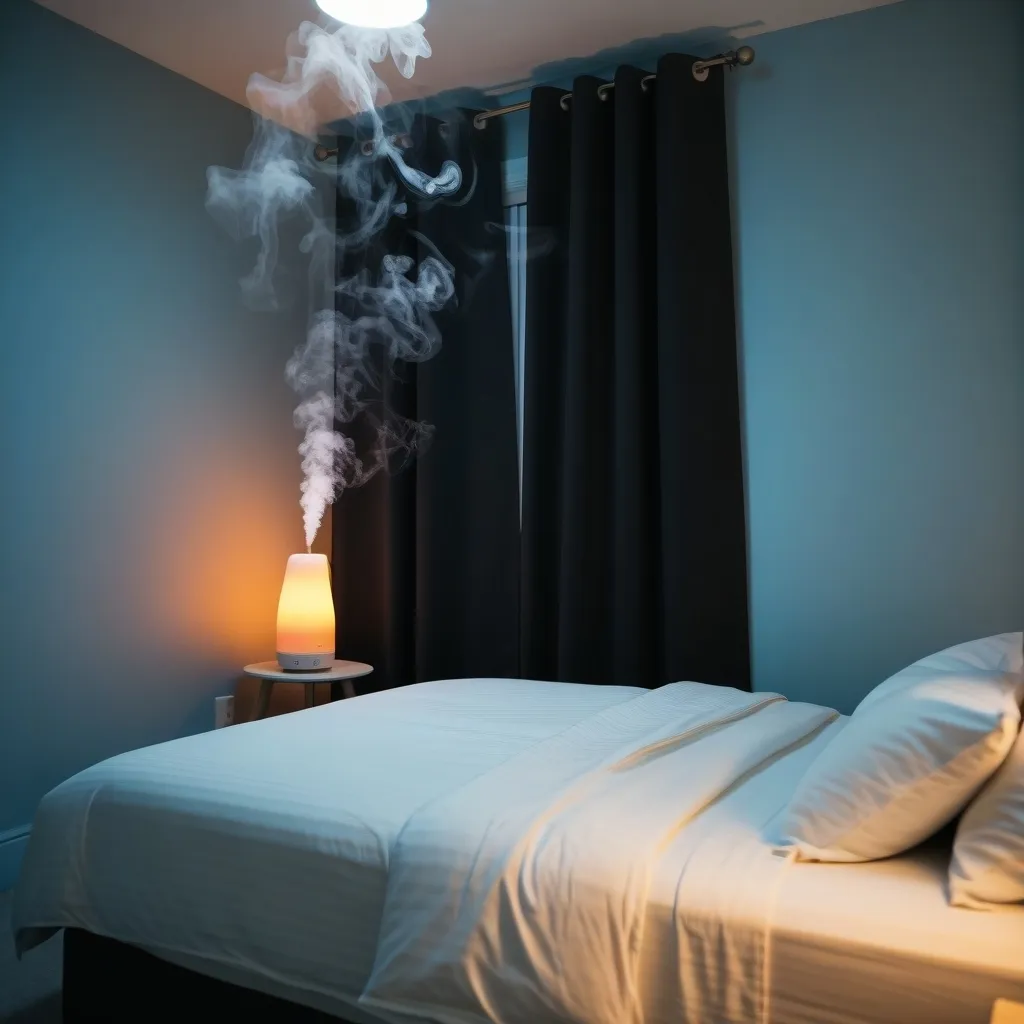Creating a Sleep Sanctuary: Transform Your Bedroom for Better Rest
We all know how important a good night’s sleep is, but sometimes our bedrooms work against us. Let’s dive into how you can turn your sleeping space into a dreamy oasis that’ll have you snoozing like a baby in no time.
First things first, let’s talk about darkness. Your bedroom should be darker than a movie theater showing a horror flick. Why? Because light is like your brain’s personal wake-up call. Even tiny slivers of light from your alarm clock or that pesky streetlamp outside can mess with your sleep.
So, what’s the fix? Blackout curtains are your new best friend. They’re like a cozy cocoon for your room, blocking out all that unwanted light. And while you’re at it, kick those electronics to the curb. TVs, computers, and smartphones are sleep’s worst enemies. Their blue light tells your brain it’s party time, not bedtime. If you absolutely must have your phone nearby, at least switch it to night mode.
Now, let’s chill out - literally. Your body likes to cool down when it’s time to sleep, so keep your bedroom on the cooler side. Aim for somewhere between 60 to 67 degrees Fahrenheit. It might sound chilly, but trust me, it’s the sweet spot for sleep.
If you’re always feeling like a human furnace at night, try percale sheets. They’re breathable and cool, perfect for hot sleepers. On the flip side, if you’re more of a “always cold” person, sateen sheets might be your jam. They’re silky and warm, like a gentle hug all night long.
Speaking of sheets, let’s talk about your bed setup. Your mattress and bedding can make or break your sleep. It’s like Goldilocks - you need to find what’s just right for you. Side sleepers often love a softer mattress, while back sleepers might prefer something firmer. And don’t forget about pillows! A good pillow should support your neck like a loyal friend, preventing those annoying aches and pains.
Now, onto noise. If you live in a bustling city or have neighbors who think 2 AM is the perfect time for band practice, you might need to get creative. White noise machines can be a lifesaver, masking those external sounds with soothing background noise. Or, if you prefer, try some gentle nature sounds or soft music. Just make sure it’s not too stimulating - we’re aiming for sleepy vibes here, not a dance party.
Colors play a big role in setting the mood, too. Think cool, calming tones like soft blues or gentle greens. These colors are like a visual lullaby for your brain. Avoid anything too bright or busy - your bedroom isn’t a carnival, after all.
And don’t underestimate the power of smell. A little lavender essential oil in a diffuser can work wonders. It’s like a spa day for your nose, helping you relax and unwind. Just steer clear of strong air fresheners - we want subtle and soothing, not an assault on your senses.
Now, let’s talk about the layout of your room. Ever heard of Feng Shui? It’s all about creating good energy flow. Try positioning your bed so you can see the door, but you’re not directly in line with it. It’s a little trick that can make you feel more secure and relaxed.
Clutter is another sleep killer. A messy room can make your mind feel messy too. Take a few minutes each day to tidy up. It’s amazing how much calmer you’ll feel in a clean space.
Your bedroom should be your personal sleep sanctuary. That means no office work, no intense workouts, and definitely no binge-watching TV shows. Your brain needs to associate your bedroom with sleep and relaxation, not stress and excitement.
If you’re a bookworm, reading in bed can be okay, but stick to paper books. E-readers can emit that pesky blue light we talked about earlier. And if you find yourself getting too caught up in your book, it might be better to read in another room.
Now, let’s get practical. Here are some easy tips you can start using tonight:
As the sun goes down, start dimming the lights in your bedroom. It’s like telling your brain, “Hey, it’s almost sleepy time!”
Adjust your thermostat to keep things cool. Your body will thank you for it.
Invest in comfy bedding. It’s worth splurging a little on good sheets and pillows.
If noise is an issue, try a white noise machine or some earplugs.
Introduce some calming colors to your room, even if it’s just through your bedding or some artwork.
Try using a diffuser with lavender essential oil for some aromatherapy action.
Keep your room organized and clutter-free. A tidy space leads to a tidy mind.
Put away those electronics at least an hour before bed. Your Instagram feed can wait until morning.
Remember, creating the perfect sleep environment is a personal thing. What works for your best friend might not work for you. Don’t be afraid to experiment and find what helps you drift off to dreamland.
With these tips, you’re well on your way to transforming your bedroom into a sleep paradise. Sweet dreams!






